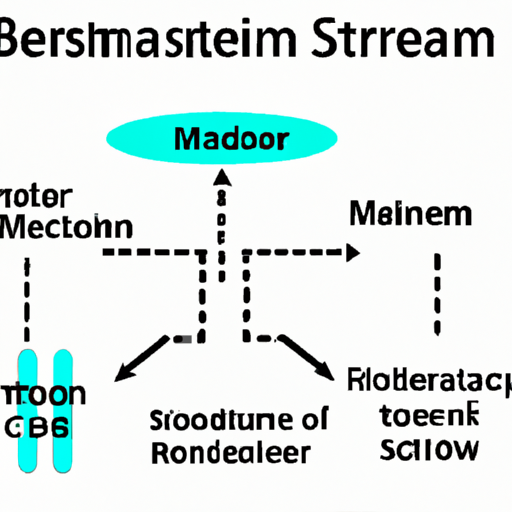

Temperature sensors are essential components in a wide range of industries, from automotive to healthcare to consumer electronics. These sensors are used to measure the temperature of a system or environment and provide valuable data for monitoring and control purposes. The production process for temperature sensors is a complex and precise one, involving several key steps to ensure the sensors meet the required specifications and standards.

1. Design and Development: The first step in the production process is the design and development of the temperature sensor. This involves determining the specifications and requirements for the sensor, such as the temperature range, accuracy, response time, and size. Engineers and designers work together to create a prototype of the sensor, which is then tested and refined to meet the desired performance criteria.
2. Selection of Materials: The next step in the production process is the selection of materials for the temperature sensor. The materials used in the sensor must be able to withstand the temperature range in which it will be operating, as well as any other environmental factors that may affect its performance. Common materials used in temperature sensors include metals such as platinum, nickel, and copper, as well as ceramics and polymers.
3. Fabrication of Sensor Elements: Once the materials have been selected, the sensor elements are fabricated using a variety of techniques. For example, thin-film deposition processes such as sputtering or evaporation may be used to create the sensing element on a substrate. The sensor elements are then patterned and etched to create the desired shape and size.
4. Assembly of Sensor Components: The next step in the production process is the assembly of the sensor components. This may involve attaching the sensor elements to a housing or substrate, as well as connecting any necessary wiring or circuitry. The sensor components are carefully assembled to ensure proper alignment and functionality.
5. Calibration and Testing: Once the sensor components have been assembled, the temperature sensor is calibrated and tested to ensure it meets the required specifications. This may involve exposing the sensor to known temperature conditions and comparing the output to a reference standard. Any adjustments or corrections are made to ensure the sensor is accurate and reliable.
6. Packaging and Quality Control: The final step in the production process is the packaging of the temperature sensor for shipment and use. The sensor is typically enclosed in a protective housing or casing to prevent damage and ensure longevity. Quality control measures are also implemented to ensure the sensor meets the required standards and specifications.
Overall, the production process for temperature sensors is a complex and precise one that involves several key steps to ensure the sensors meet the required specifications and standards. By following these steps carefully and diligently, manufacturers can produce high-quality temperature sensors that are reliable and accurate for a wide range of applications.
Temperature sensors are essential components in a wide range of industries, from automotive to healthcare to consumer electronics. These sensors are used to measure the temperature of a system or environment and provide valuable data for monitoring and control purposes. The production process for temperature sensors is a complex and precise one, involving several key steps to ensure the sensors meet the required specifications and standards.

1. Design and Development: The first step in the production process is the design and development of the temperature sensor. This involves determining the specifications and requirements for the sensor, such as the temperature range, accuracy, response time, and size. Engineers and designers work together to create a prototype of the sensor, which is then tested and refined to meet the desired performance criteria.
2. Selection of Materials: The next step in the production process is the selection of materials for the temperature sensor. The materials used in the sensor must be able to withstand the temperature range in which it will be operating, as well as any other environmental factors that may affect its performance. Common materials used in temperature sensors include metals such as platinum, nickel, and copper, as well as ceramics and polymers.
3. Fabrication of Sensor Elements: Once the materials have been selected, the sensor elements are fabricated using a variety of techniques. For example, thin-film deposition processes such as sputtering or evaporation may be used to create the sensing element on a substrate. The sensor elements are then patterned and etched to create the desired shape and size.
4. Assembly of Sensor Components: The next step in the production process is the assembly of the sensor components. This may involve attaching the sensor elements to a housing or substrate, as well as connecting any necessary wiring or circuitry. The sensor components are carefully assembled to ensure proper alignment and functionality.
5. Calibration and Testing: Once the sensor components have been assembled, the temperature sensor is calibrated and tested to ensure it meets the required specifications. This may involve exposing the sensor to known temperature conditions and comparing the output to a reference standard. Any adjustments or corrections are made to ensure the sensor is accurate and reliable.
6. Packaging and Quality Control: The final step in the production process is the packaging of the temperature sensor for shipment and use. The sensor is typically enclosed in a protective housing or casing to prevent damage and ensure longevity. Quality control measures are also implemented to ensure the sensor meets the required standards and specifications.
Overall, the production process for temperature sensors is a complex and precise one that involves several key steps to ensure the sensors meet the required specifications and standards. By following these steps carefully and diligently, manufacturers can produce high-quality temperature sensors that are reliable and accurate for a wide range of applications.